Article reprinted from: Andy730 public account
IEEE released a technical roadmap report on large-scale data storage, covering hard disk drives, magnetic tapes, optical disk technology and solid state storage. In addition, non-volatile storage technologies closely related to other IRDS Roadmap are also involved, including magnetoresistive RAM(MRAM), resistive RAM(ReRAM), and ferroelectric RAM(FeRAM). And phase change memory (PCM). It is worth mentioning that the report also discusses the feasibility of using DNA for archive storage.
In the field of solid-state storage, NAND flash memory occupies a dominant position, and the current market size has reached US $60 billion. Although the unit cost of alternative technologies such as MRAM, FeRAM, ReRAM and PCM is still relatively high, they have gradually replaced NOR flash memory and some SRAM (especially MRAM and ReRAM) in embedded devices. It is expected that 2024 will be a year of full recovery of storage and storage technologies. The supply uncertainty caused by the epidemic led to the accumulation of large inventories in 2022 and 2023. In the future, NAND flash memory will continue to pursue higher layers and bits per unit, but it is increasingly difficult to reduce costs. At the same time, the increase in bits per unit may also lead to a decrease in durability and performance.
The following figure shows the roadmap for NAND flash memory in the large-scale storage roadmap.

The overall shipments of hard disk drives (HDD) continue to decline, and its traditional applications are gradually replaced by solid state drives (SSD). However, the data center and enterprise near-line HDD markets resumed their growth momentum in 2024, and the demand for HDD storage for big data applications (including AI) continued to grow. These hard disks adopt sealed design and are filled with helium, which can contain up to 10 disks and may adopt technologies such as double actuators, thermal assisted magnetic recording (HAMR) and two-dimensional magnetic recording (TDMR). Currently, the storage capacity has reached 32TB, but it is expected that 50TB of HDD will be available by 2026. This will enable HDD to remain competitive in secondary storage and active archiving applications and effectively compete with SSD.
The following figure shows the HDD technology roadmap in the large-scale storage roadmap.
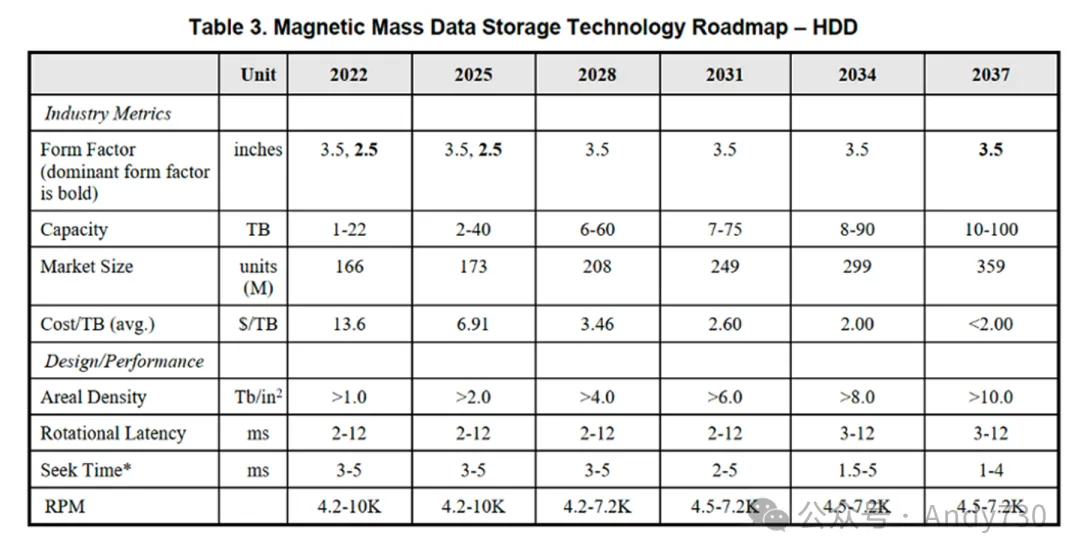
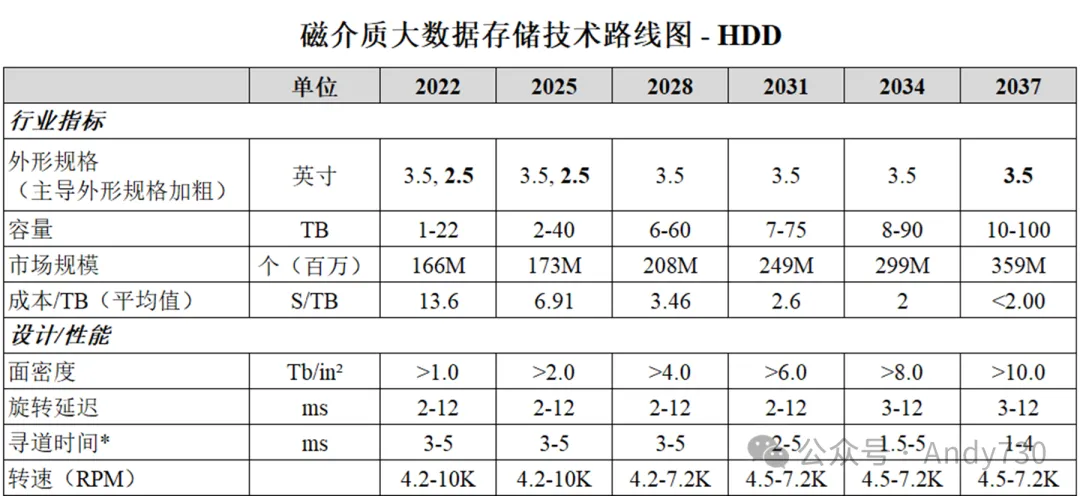
The native capacity of tape technology has now reached 50TB (such as IBM Enterprise tape), and the tape consumes almost no energy outside the drive. Compared with HDD, tape storage costs per byte of data are significantly reduced. Therefore, tape has become a low-cost and compact archive storage solution. With the development of technology, it is expected that in the next few generations of products, there will be magnetic cassettes with a native capacity of more than 100TB. Tape benefits from advances in HDD magnetic recording technology in capacity growth.
The following table shows the roadmap of tape technology in the large-scale storage roadmap.
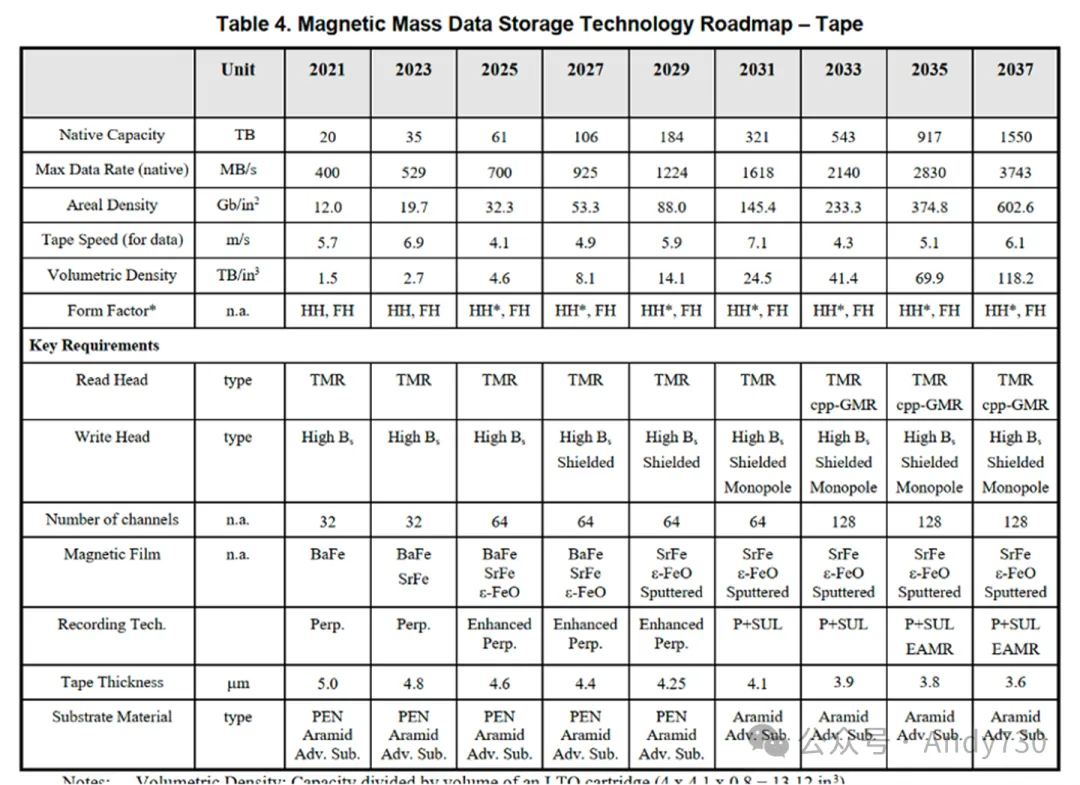
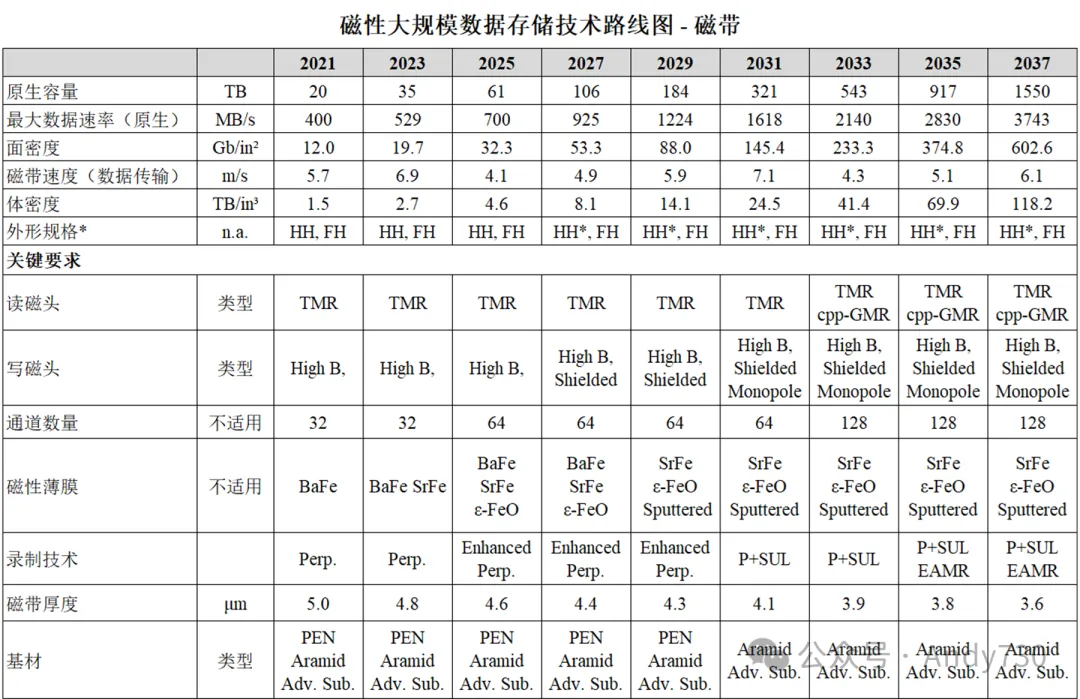
As a consumer media distribution medium, CD technology has gradually declined, while the focus of the new generation of optical storage products is to serve as a low-cost archive storage medium. It is expected that 100TB of optical disks will be written at one time in the near future, and optical storage may appear in The Optical Disk Library system. However, optical disk libraries are facing competition from more mature tape libraries.
The following figure shows the roadmap for optical disk technology in the large-scale storage roadmap.
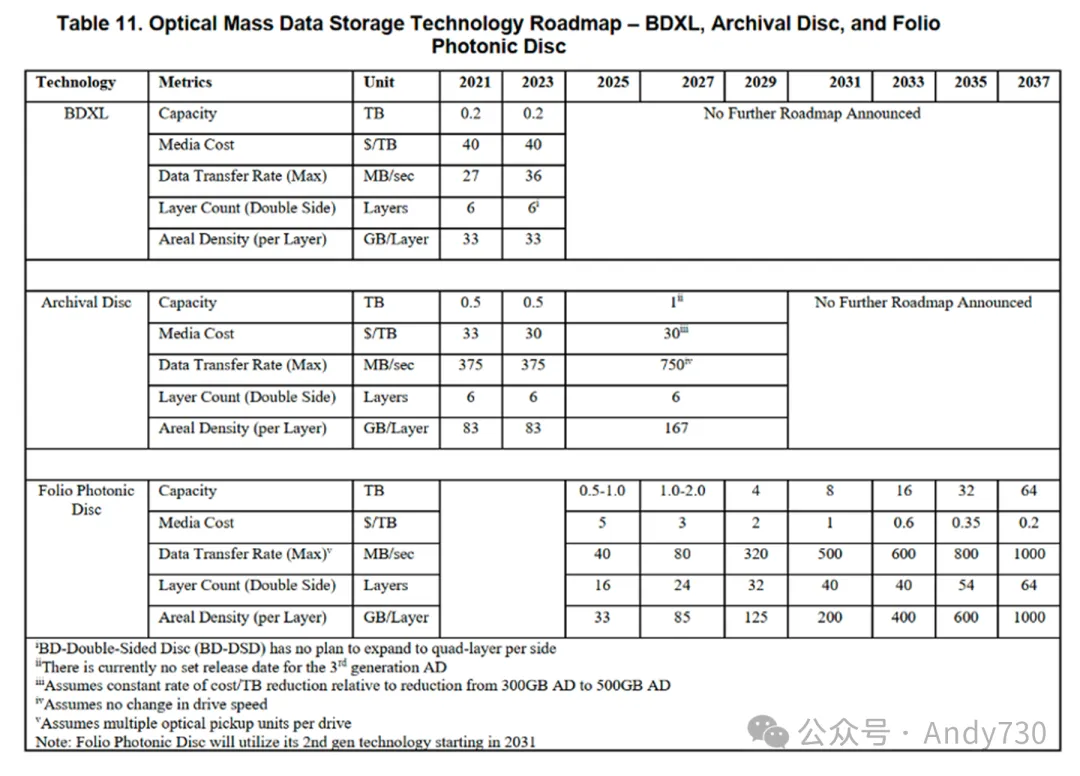
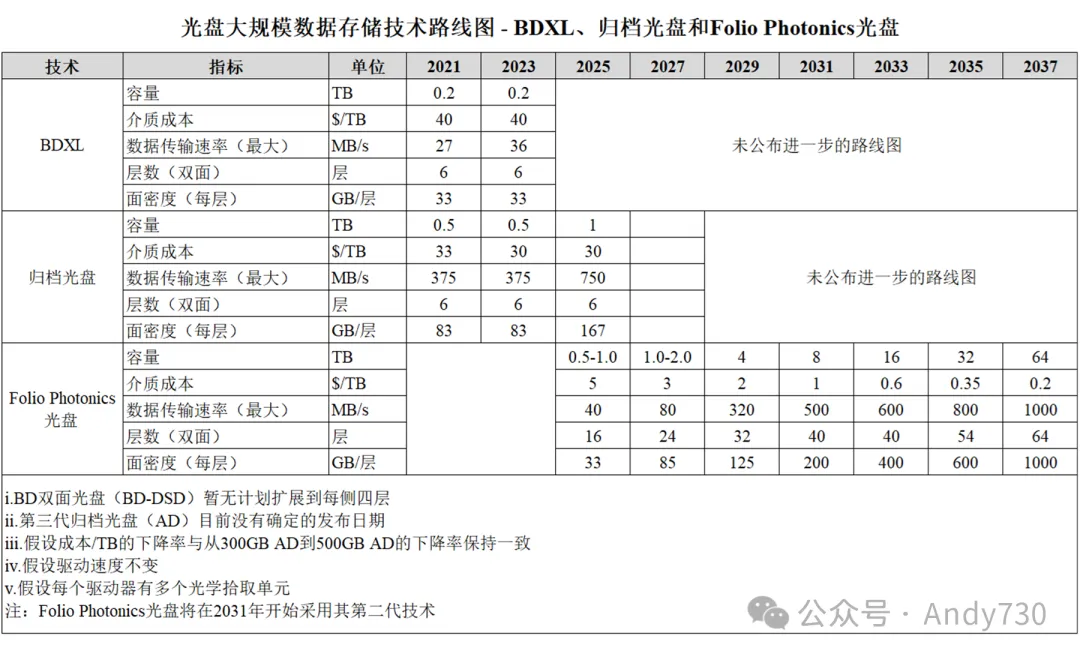
DNA data storage has been verified in the laboratory, but the cost of reading and writing data on synthetic DNA is still too high for practical applications. However, with the rapid development of genomics in medical applications, the read and write costs of synthetic DNA are gradually decreasing, which may make DNA an affordable archive storage alternative in the near future. DNA storage may be similar to a library system of tapes or discs. However, to achieve this goal, a lot of work needs to be invested to create a manufacturable and cost-effective DNA storage system.
With the increasing demand for digital storage, we need more advanced storage technologies to support a powerful digital large-scale storage system. IEEE IRDS large-scale storage roadmap reveals the future development trend of NAND flash memory, emerging non-volatile memory, HDD, tape, optical storage and DNA storage technologies.
-----
Source:Tom Coughlin; IEEE Roadmap Outlines Development Of Digital Storage Technology; May 21, 2024


 Reprint
Reprint 